Locomotor Skills: What You Need to Know
Starting at birth, babies begin to work on their locomotor skills and nonlocomotor skills. Through floor play, they build up muscle strength and practice movement patterns to soon learn how to roll, crawl, and walk. Locomotor skills then continue to develop and progress throughout childhood and even adulthood depending upon your athletic abilities.
Locomotor skills enable children to move through different environments moving their bodies from one location to another, helping them build confidence and develop a sense of freedom.
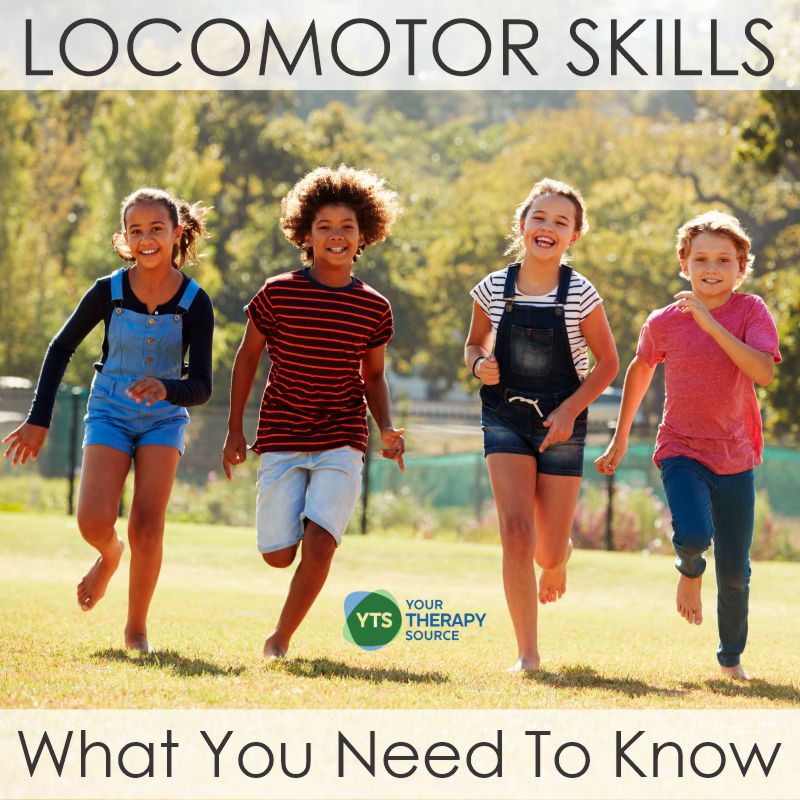
What Are Locomotor Skills?
Locomotor skills help us move from one place to another. This movement can take place in different directions and with varying speeds. We develop locomotor skills starting at birth when we begin to wiggle and squirm, roll over, army crawl, crawling, kneel walk, and then walking. And that all happens in about a period of 12 months! That’s a lot of work for a little one.
As children get older, they continue to develop more movement patterns and move differently from one location to another. And many times, move even faster!
These skills do not just develop though. Kids need long periods of daily physical activity in order to learn these movement skills. Often time, children need specific instruction or lessons taught by early childhood teachers in motor groups, physical education teachers in elementary schools, classroom teachers at recess, or pediatric occupational or physical therapists.
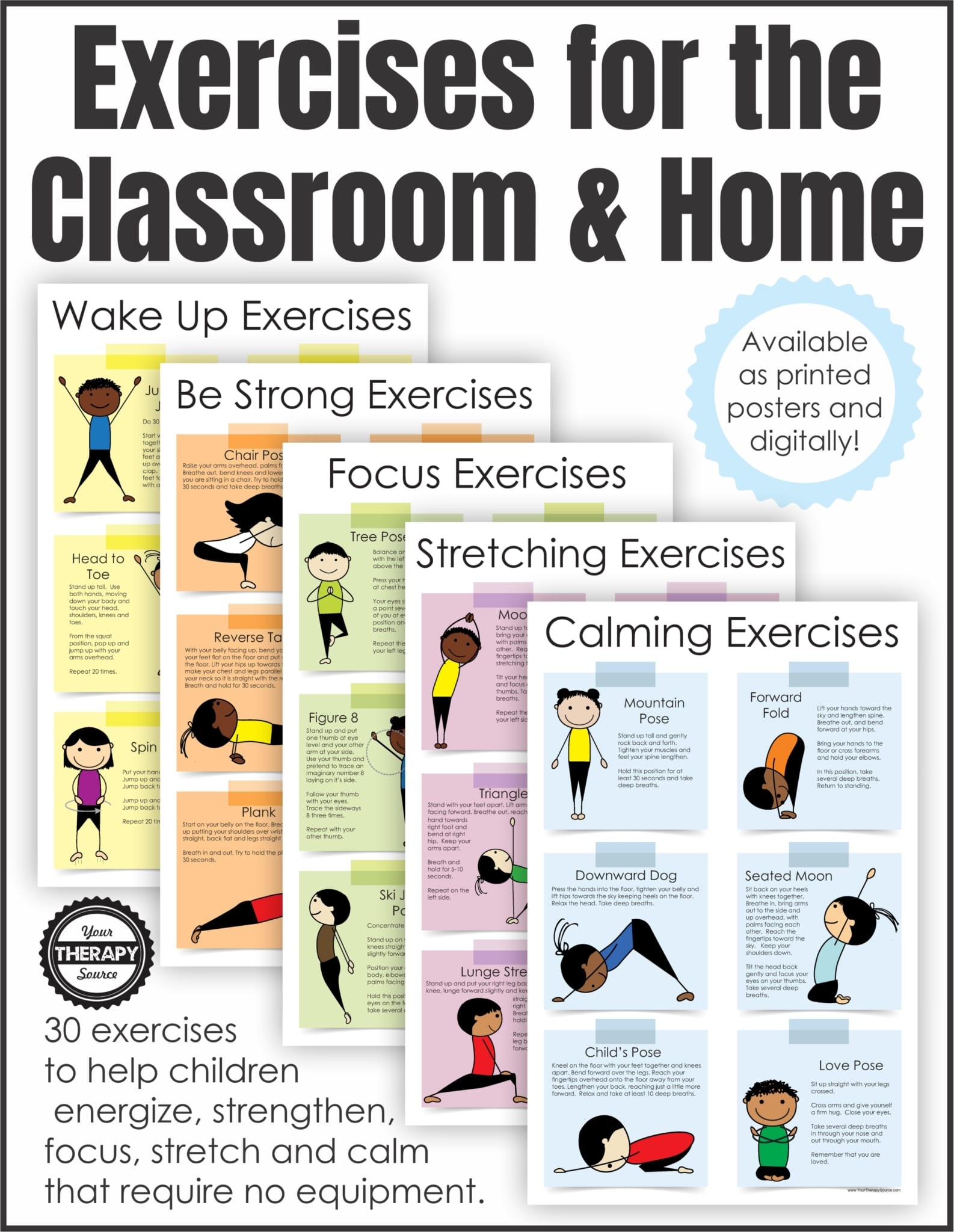
Exercises for the Classroom and Home PDF Version
Importance of Locomotor Skills
Why are locomotor movements so important? The obvious answer is that we all need to move from one location to another throughout our daily lives. The other more extensive answer is that using these skills provides opportunities to develop a healthy lifestyle with daily physical activity. Locomotor skills help our bodies with:
- cardiovascular health
- endurance
- balance
- coordination
- enjoyment of sports
- healthy weight
- independence
- functional skills
Children need ample time, experience, and different environments to develop these gross motor skills.
Locomotor Skill Examples
Here is a locomotor skills checklist (this is not an exhaustive list):
✔ rolling
✔ army crawling – crawling on the belly pulling with your arms
✔ crawling on your hands and knees
✔walking on your knees
✔ sidestepping along a wall
✔ walking (read all the details about the development of walking here)
✔ slide your feet across the floor or in skating or skiing
✔ marching
✔ stomping
✔ jogging
✔ running
✔ jumping
✔ hopping on one foot
✔ leap from one foot to the opposite foot
✔ galloping
✔ skipping
As you can see with this long list, proficiency with these skills will take children years of gross motor skill practice.
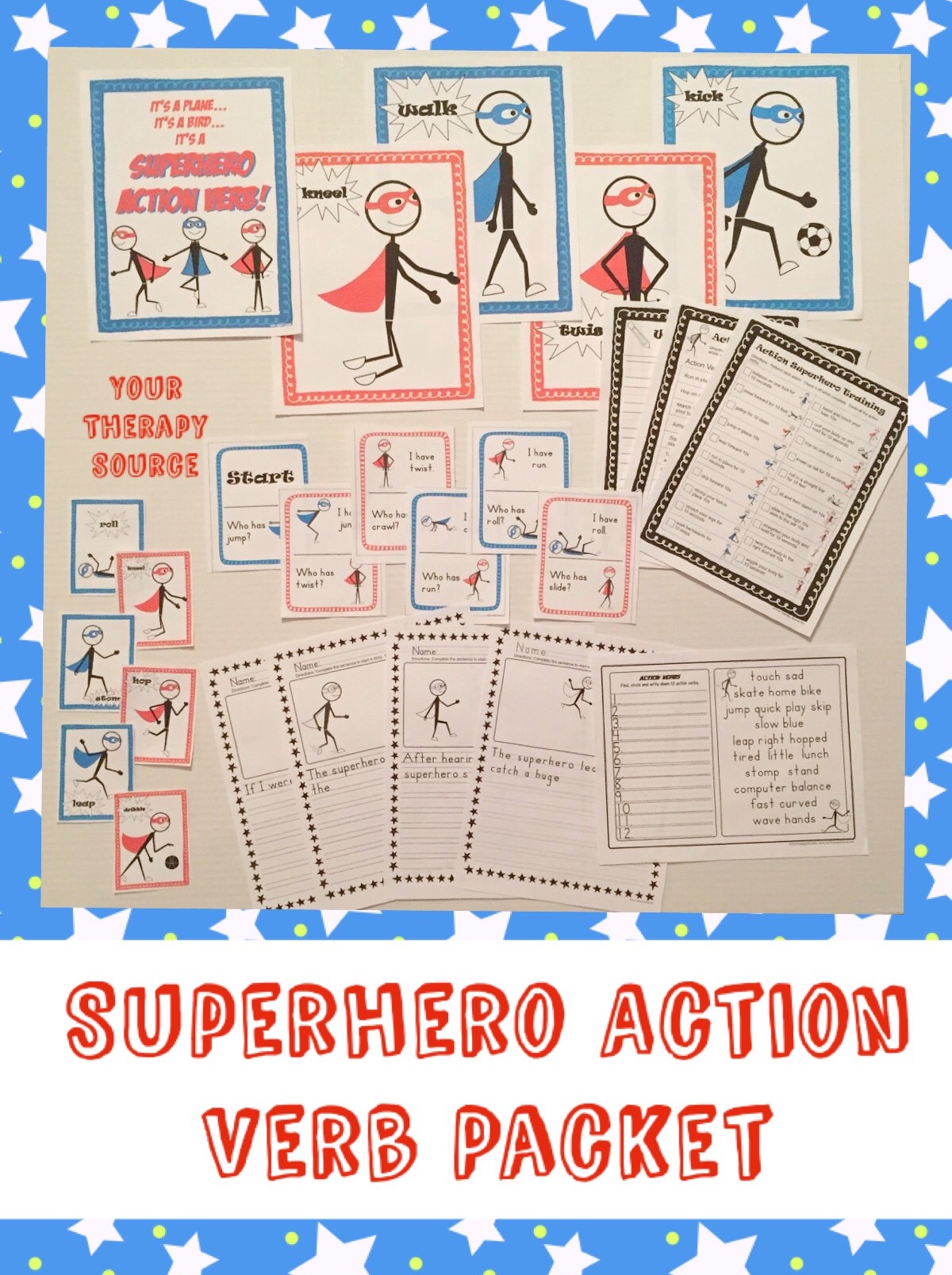
Superhero Action Verbs
What Are Nonlocomotor Skills?
In comparison, non-locomotor skills are ways we move our body but at least one body part stays in contact with the ground. These fundamental movement skills are necessary for the body to practice moving on a stable base of support. Think of nonlocomotor skills as the building blocks for postural control and specialized motor skills like gymnastics, games like hopscotch, dance, and karate.
Nonlocomotor Skill Examples
Again, this is not an exhaustive list, but a nonlocomotor skills checklist may include:
✔ twisting
✔ turn
✔ stretch
✔ sway
✔ bending
✔ swing
✔ straighten
✔ balance
✔ curl
✔ shake
When to Practice Locomotor and Nonlocomotor Skills
Practicing these skills is great FUN for children! Oftentimes, children will naturally practice these activities during floor play for babies, outdoor free play time for preschoolers, recess, physical education class, and organized sports for older children.
There are other opportunities throughout the day for kids to work on mastery of these skills such as:
- brain breaks
- embodied cognition lessons – when movement and learning are combined it may help your students to remember the material
- transitioning from one activity to another
- transitioning from one room to another room
For children who struggle mastering these skills, a pediatric Physical Therapist may be able to help.
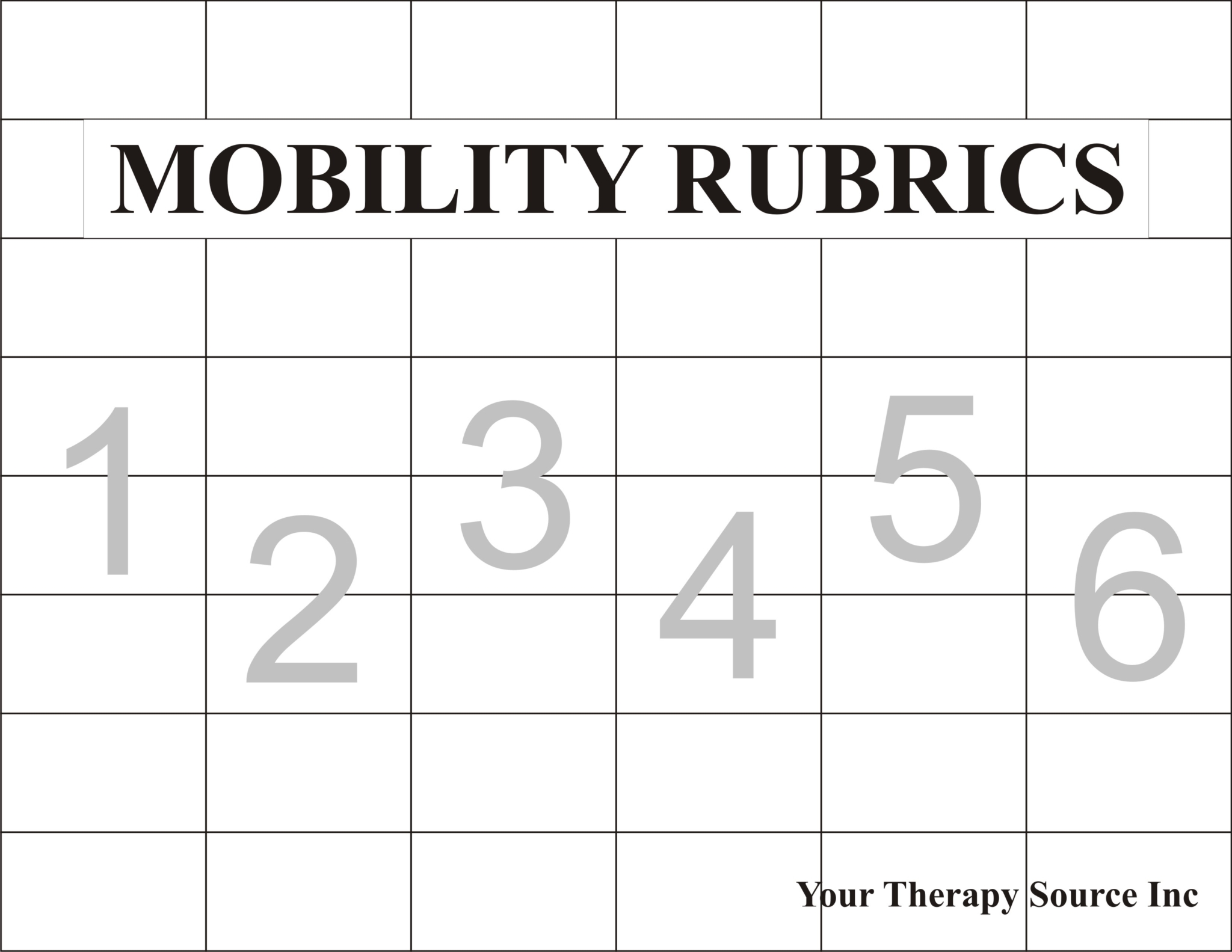
Mobility Rubrics
Combining Locomotor Skills with Nonlocomotor Skills and More
There are so many different ways that you can combine these movements for FUN games and practice time.
For locomotor and many non-locomotor skills you can vary the direction:
- forward
- backward
- sideways
- left
- right
- up
- down
- in between
- under
- around
- above
- below
You can vary the speed or path at which the activities are completed:
- fast
- slow
- quickly
- straight path
- crooked path
- curved path
- zig-zag path
- circular path
Many of our joints in the body move in different directions. For nonlocomotor skills you can vary the body part that you are using:
- shoulder
- arm
- elbow
- wrist
- fingers
- hip
- knee
- ankle
- toes
- back
Mix Them All Together
Now mix those options together to create locomotor and nonlocomotor skill challenges. For example here are 10 locomotor and nonlocomotor skill examples to try.
Can you…
- walk fast backwards on a curved path?
- run slowly in a circle?
- swing your shoulder in slow motion?
- jump to the left, bend over, and touch your hand to the floor?
- leap sideways, spin in a circle, and stretch to the sky?
- crawl quickly under a desk?
- shake your finger slowly?
- hop on your toes to the right?
- stomp your feet turning in a circle to the left?
- skip in a stright line shaking your hands?
The combinations are endless!
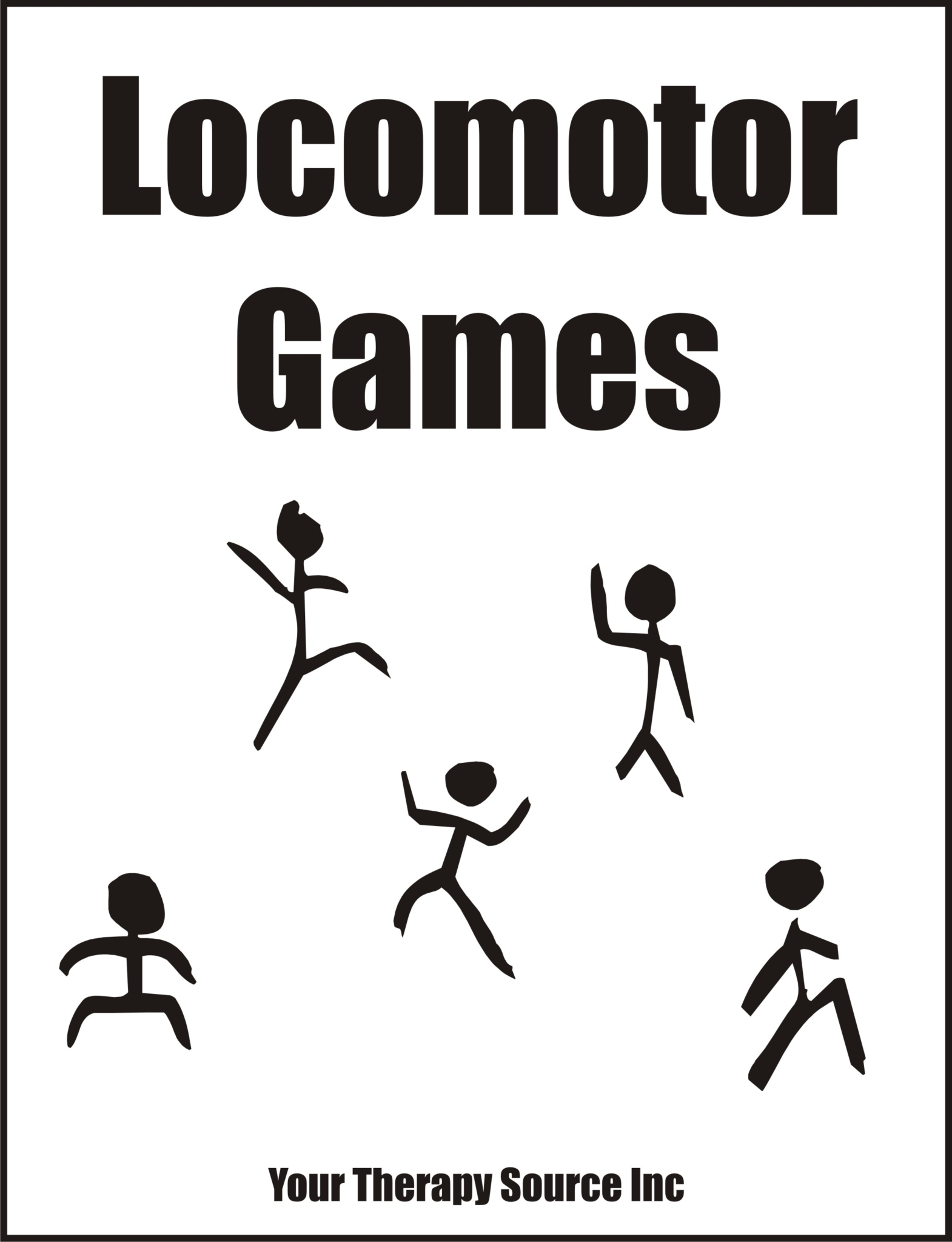
Locomotor Games
Games that Require Locomotor Skills
If your children are ready, you can introduce games that require locomotor skills. Some examples are:
- relay races where the kids move along different pathways
- playing with hula hoops – read about games with hula hoops here
- playing kickball
- any tag games
- playing Simon Says and calling out different body parts to touch or different ways to move
- exploring at the playground where children have to walk, run, climb, and slide.
- Follow the Leader
- all sports
Not only will children gain practice time to develop these motor skills, they will also be working on social and emotional skills when playing with their peers.
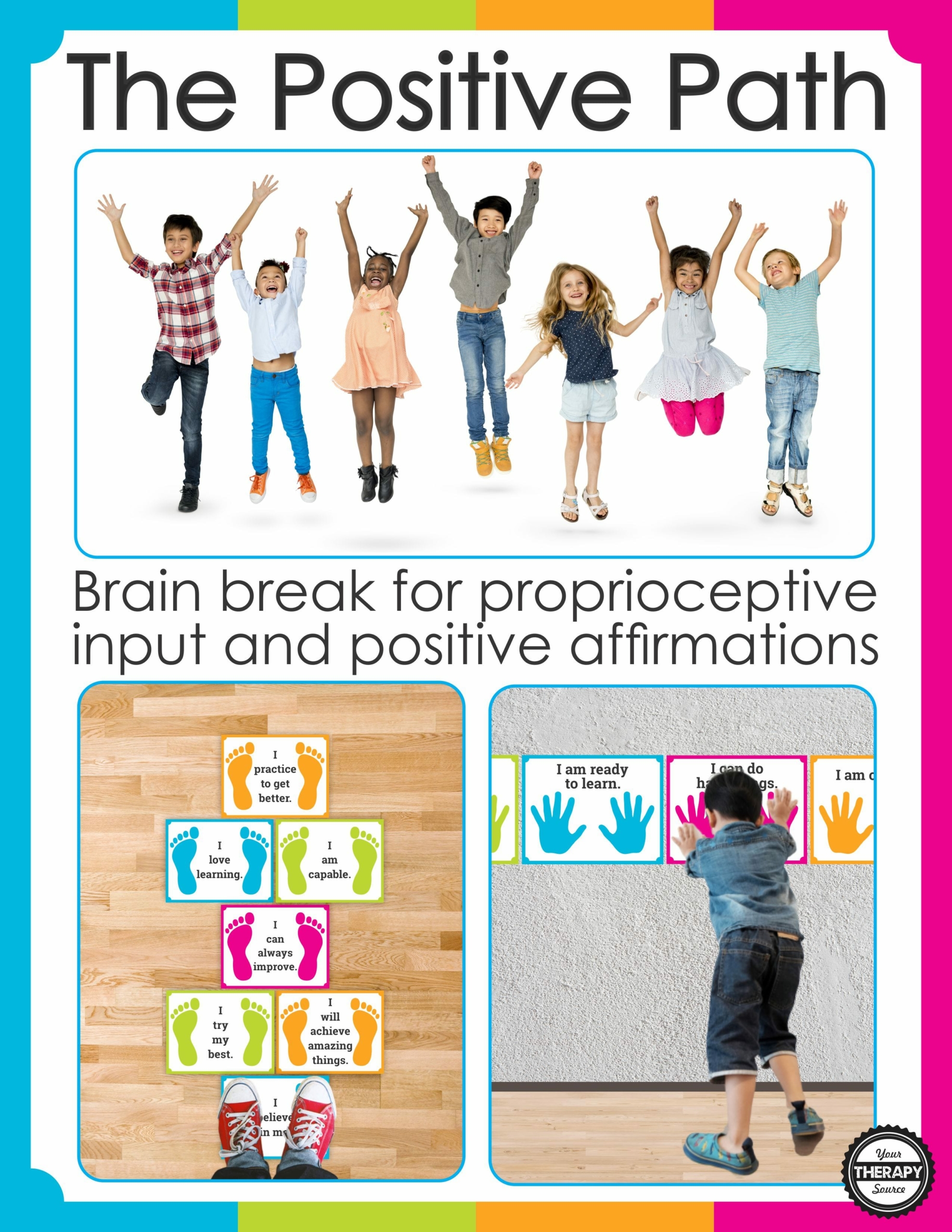
Positive Affirmations for Kids – The Positive Path
Why Is It So Important to Practice Locomotor Skills?
Locomotor skills are defined as the proficient use of the body to move from one place to another. Locomotor skills encompass both gross motor and fine motor coordination, as well as endurance and strength. As mentioned earlier, when a child learns to walk, climb stairs, kick a ball, or ride a bike they are developing locomotor skills. Keep in mind though it is not just about those actions. There are motor planning and motor control skills that also need to develop alongside of locomotor skills.
Look at the Big Picture
Be mindful of looking at the big picture. It may not be locomotor skills that a child needs to work on, but perhaps spatial awareness or proprioception.
Taking a closer look at one example of an activity that requires locomotor skills, walking down the stairs, children need to know how to lift their body weight with each leg so that they can move downwards without falling. They also need to coordinate this movement with their foot movements. This requires basic knowledge of the shape and structure of stairs (e.g., how many steps there are, where they go, etc.), as well as an understanding of their body’s movement patterns in relation to walking or running.
Another example would be playing in a game of kickball. A child must kick a ball with accuracy, power, and run to the base. Kicking a ball requires the coordination between different muscle groups in the body, so that power is generated for kicking, but the ball is directed towards the intended target. This requires good posture and balance, as well as understanding of different movement patterns involved in kicking (e.g., when to bend your knee).
A third example would be riding a bike. Riding a bicycle involves many different locomotor skills, which are all put together to allow the rider to go from one place to another. When riding a bike, children need to understand how the pedals work in relation to their body weight and movement patterns – e.g., they need to know how much pressure they need to exert on the pedals in order for it move forward. They also need to know how to steer and brake, as well as how to keep their balance. All of these actions put together require a great amount of strength and endurance.
Children develop locomotor skills through constant practice and playfulness with movement across the lifespan, starting from infancy onwards. This can be done at home (e.g., kicking a ball, riding a bike) or in the community (e.g., climbing stairs). The key to success is allowing them the time to experience and develop these important skills.


